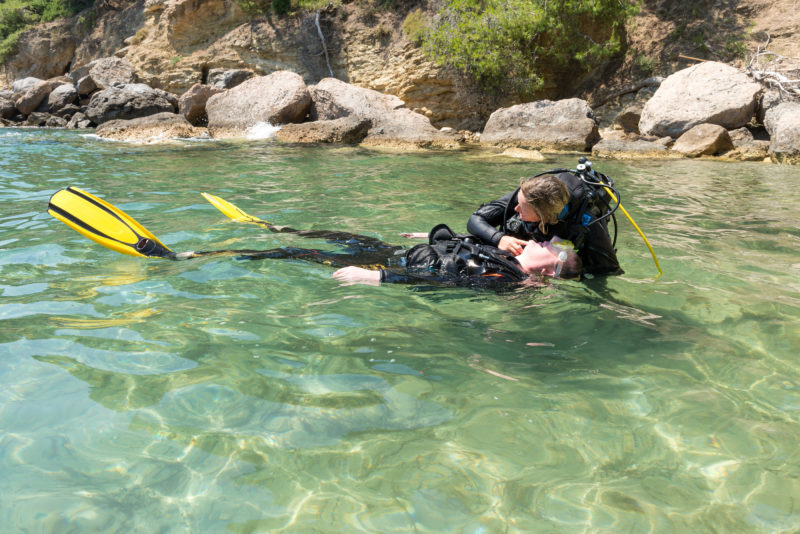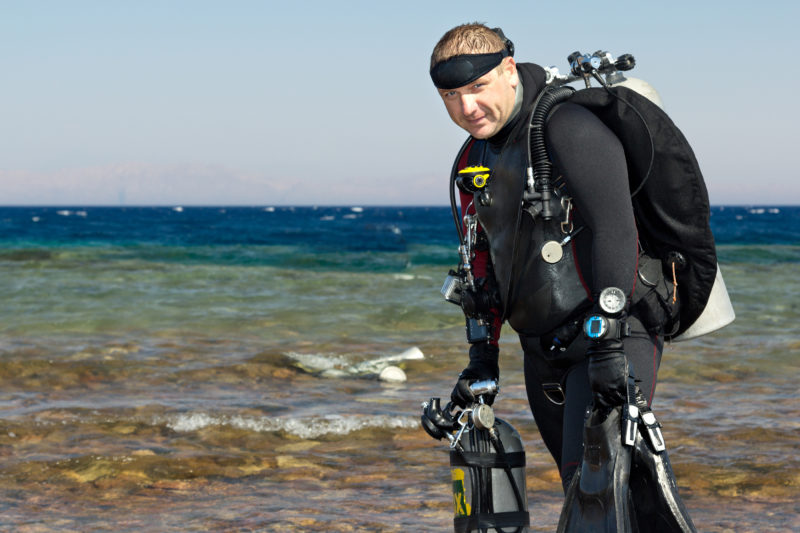Technical diving comes with all new topside and underwater skills, as well as a whole new language. To help tech-curious divers pick their way through the linguistic jungle, we’ve created a handy ABC breakdown of technical terms. So far, we’ve covered A through D and E through H. Here we’ll address I through L.
I is for Isobaric Counter-Diffusion
Sound complicated? It doesn’t have to be. Isobaric counter-diffusion (ICBD) is an integral part of diving physiology and especially relevant to trimix divers using hypoxic gases. These divers must manage three gases: oxygen, nitrogen and helium. Isobaric counter-diffusion deals with the two inert gases, nitrogen and helium, and describes their movement in and out of our tissues at a constant ambient pressure (= depth) after a change of breathing gas.
Normally, we link the off-gassing process to changes in ambient pressure or depth. But divers trigger the IBCD changes by switching from a gas low in nitrogen and generally high in helium to a gas high in nitrogen. The result can be bubble formation leading to inner-ear decompression sickness. Since we control our balance with the inner ear, symptoms can include extreme nausea and disorientation to the point of divers losing their sense of up and down.
There is no easy way to deal with inner-ear DCS. This is why divers planning for deep trimix dives carefully select breathing gases to minimize potential problems.
J is for Judgment

Technical divers learn to plan for contingencies in case the dive doesn’t go to plan. And while many divers mentally rehearse failure scenarios before a dive, it’s near-impossible to preempt every potential change in water conditions, for example.
On the dive, that means using judgment to deal with unexpected situations. Divers must evaluate what’s happening, what tools they can use to deal with the specific situation, and then make a considered decision on how to end the dive as safely as possible.
Good judgment requires excellent diving skills so that diving becomes second nature and experience built up over numerous dives in varying conditions. You cannot develop good judgement overnight, but thorough debriefs do help the process along. These help divers understand issues that arose on the dive, how the team leader dealt with it and made decisions and, crucially, how they can improve for the next dive.
K is for the Key to tech-diver progression

‘Dive, dive, dive’ is part of the answer to tech-diver progression. However, just accounting for quantity of dives might be too simplistic, as just counting experience doesn’t examine diver’s foundations. We began our tech-diving alphabet with the ABCDs — awareness, buoyancy, communications and discipline — which, alongside other in-water skills, are the foundation for any skilled technical diver.
An introductory technical courses puts many of these foundations in place. If your technical-diving instructor makes you practice hovering, trim and propulsion techniques over and over again, thank them. Without these skills becoming second nature, it’s futile to try decompression dives. You may be able to complete a few successfully, but without strong foundational skills you simply won’t be able to progress to more complex dives.
The same goes for diving theory. Understanding as much as possible what is happening in your body (physiology) and around you (physics) allows you to make informed decisions about decompression plans, for example. Tech-diving theory is constantly evolving and trying to stay current will help you develop your knowledge when you’re not in the water.
With solid foundations in place, then it’s time to dive, dive, dive to build and retain muscle memory.
L is for Logistics
Logistics may not be the first thing on a recreational diver’s mind, but the more you develop your diving the more you’ll have to think about diving logistics. Alternately, pick a dive operator that will do the organizing for you.
Tech diving often requires different gases, additional gear, tanks, regulators and more. Longer runtimes mean you may not always be able to fit in with a regular dive boat schedule unless you want to curtail your dive time.
Then there’s the question of gear transportation. As a tech diver, you’ll become familiar with airlines’ excess-luggage charges. You’ll learn who has the best policies for taking sports equipment and, for CCR divers, how to fly with tanks.
It might not all be fun and games all the time. However, learning these basic terms and skills is all part of the adventure that is technical diving.

